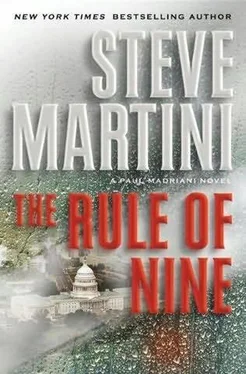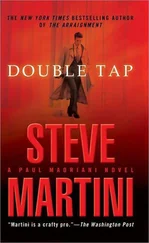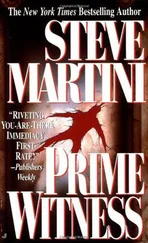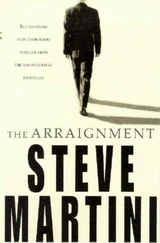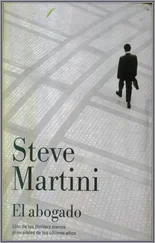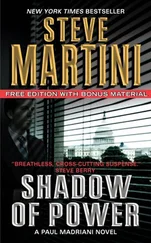“Hello, Joselyn here. Is your boss in? I need to talk to him. Tell him it’s urgent.” She waits on the line, tapping her pointed high heel on the floor nervously as she holds the phone to her ear. She glances under the stalls to make sure no one is within earshot.
“Hello. Thanks for taking my call. I don’t have much time. I’m in Puerto Rico at the airport…
“I know. I know. I didn’t know myself that I was coming down here until late yesterday. Unfortunately, I haven’t had a moment alone since then to make the call, not during the day when I could reach you. And I didn’t want to commit any of this to an e-mail or a text message…”
She listens for a moment as he agrees that texting or e-mail would be unwise.
“Listen, we’ve got a problem. Remember the lawyer I told you about and our last conversation about Thorn? You wanted me to keep you informed…
“Yes, well, the lawyer’s been nosing around with the FBI. I’m not sure exactly what he told them or how much they believe, but he’s managed to track Thorn to a hotel in a small town called Ponce in Puerto Rico.”
She listens to the voice on the other end.
“Yes, that’s what I said. There are the two of them, Madriani and his investigator, a man named Herman Diggs. They were armed, but they’re not any longer. I don’t think Madriani got the FBI to follow through, but I’m not sure. That’s why I’m calling you, to give you a heads-up.”
She listens for a moment.
“I’m not sure what he knows,” says Joselyn. “But he may be about to find out, and it could get pretty hairy. Do you understand?” She listens again.
“Exactly. That’s why I called,” she says. “I would like you to take care of it. A single phone call from you would do it.”
Joselyn listens for a moment. She gets the reply she was hoping for. “Good. Then I’ll leave it in your hands. You’ll take care of it…?”
“Good. I can’t stay on the line. They’re gonna start wondering where I am. I’ll call you when I know more. Take care.” She pushes the red button, drops the phone in her purse, and heads back out to the luggage-claim area.
There was a reason Thorn had picked the ancient Boeing 727-100C, and strangely, it wasn’t because of the price of the plane. The old rear trijet design had everything he needed.
Dating to the early 1960s, the 727-100C included an internal auxiliary power unit for starting its own engines on the ground. This eliminated the need for a heavy external power source on the remote runway in Puerto Rico.
The “C” designation meant it was convertible and could be used for either freight or passengers depending on how the interior of the plane was configured. It had a large freight door on the forward left-hand side of the fuselage that could be used or not, depending on whether the air carrier was flying passengers, freight, or a combination of the two.
The 727 had been the workhorse for most U.S. domestic short-haul flights during the 1960s and ’70s because it required very little ground maintenance. Its wing design incorporated leading-edge flaps that gave the plane greater lift, allowing it to remain stable in flight at low speeds. For all of these reasons it could service smaller cities with shorter runways, resulting in one of the plane’s most distinctive features, the built-in drop-down ramp, or airstair, near the tail section of the plane. For Thorn, this was critical.
The drop-down stairs were lowered from under the rear belly and allowed passengers to get off the plane without the need of roll-up steps or a connecting jetway. Some airlines came to love it when they discovered that passengers could be de-planed from the front while cleaning crews could climb on board from the lowered airstairs at the rear, thereby shortening the turnaround time.
But this love affair came to an abrupt end in 1971 because of one man, a ghost who called himself Dan Cooper. An early aviation hijacker, Cooper waylaid a Northwest flight claiming he had a bomb in his carry-on luggage. He demanded and got $200,000 in twenty-dollar bills along with four parachutes. Cooper used one of the parachutes to make the leap into criminal history by jumping from the steps of the rear drop-down ramp at ten thousand feet with the flaps lowered to reduce speed. He was never seen again.
Some claimed that he died in the jump or soon thereafter, either in the snowy mountains of the northwest or by drowning in one of the many rivers in the area. Others claimed they had seen him since. The FBI was still looking for him. Like Jacob Waltz and the “Lost Dutchman Mine,” D. B. Cooper had acquired the status of a myth.
For this reason he was one of Thorn’s heroes. Cooper left two enduring monuments to his brief criminal career. The scanning of all carry-on luggage for bombs and weapons, and another that was linked to his name, the so-called Cooper Vane.
This morning Thorn was busy at the airfield in Puerto Rico removing the old Cooper Vane from the tail section of his plane. The vane was a deceptively simple mechanical device. Federal law required its installation on all commercial planes with rear airstairs after Cooper’s crime.
The vane consisted of an oval-shaped control surface that stuck out from the underbelly of the plane like an oversize Ping-Pong paddle. This was connected to a rectangular steel plate on a pivoting bolt that was spring-loaded. When the plane was on the ground, the paddle remained perpendicular to the fuselage, its flat edges facing the front and rear of the plane. But in flight, when air speed hit the forward face of the paddle, it would turn parallel to the fuselage, pivoting the steel plate with it. The plate acted like a gate latch, preventing the airstairs from being lowered in flight.
The ability to lower the airstairs in flight was critical to Thorn’s plan. Hence the vane had to come off.
While Thorn worked on this, his ace welder was busy working on the rear ramp itself. He used an arc welder to fix two heavy steel rails, one along each side of the ramp, about six inches above each step. These steel rails had been prefabricated and had a slight curve, higher at each end and lower in the middle. Affixed to each of the two rails were heavy steel rollers, four on each side.
Thorn drilled out the post pivot on the Cooper Vane and removed the steel plate. Then he patched over the hole with an aluminum panel, sealing it with a special epoxy to ensure that the patch wouldn’t leak when the plane was pressurized. He then turned his attention to the next task, the bomb-Little Boy, still resting in its wooden crate.
Thorn had done considerable research before settling on the plane and the type of ordnance to be used. One of the most insightful pieces of literature, strange as it might seem because it was so dated, was a postwar analysis based on captured classified documents from the Japanese of their attack on Pearl Harbor.
Thorn was particularly impressed with the detailed analysis regarding the destruction of the USS Arizona.
The Japanese bomb that did the job was about eight hundred pounds, less than half the weight of Thorn’s device. Contrary to popular belief, it wasn’t an aerial bomb at all. It was a modified naval artillery shell, armor piercing, with a box-fin stabilizer attached to the tail and a delay fuse added to the nose. The Japanese were an entire generation ahead of any other warfaring nation in their conception of how to retread old ordnance with new technology.
When it hit the ship, it sliced through the top weather deck of solid teak. It then passed through two armor-plated lower decks, each one four inches thick, before it came to rest in the forward magazine of the battleship. There it exploded, igniting almost a million pounds of gunpowder used to fire shells from the ship’s fourteen-inch guns. The blast melted iron bulkheads and literally lifted the ship out of the water.
Читать дальше
